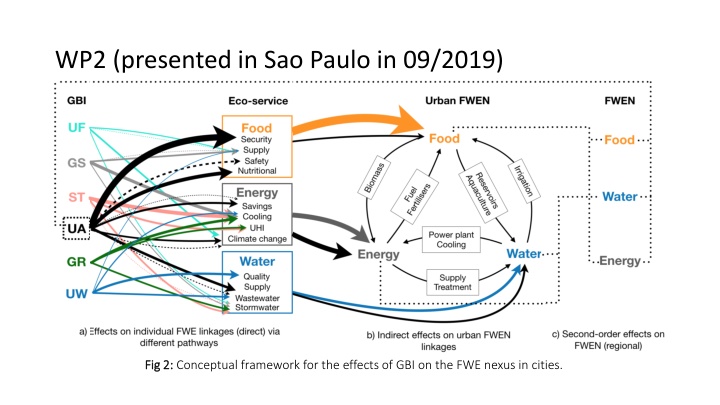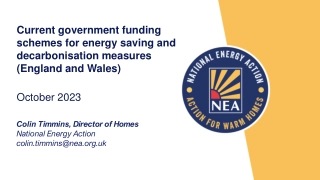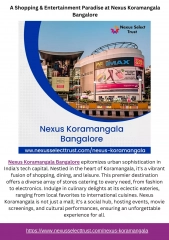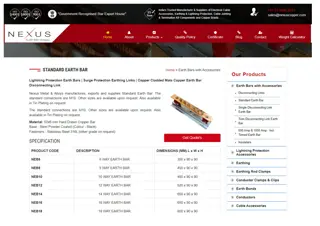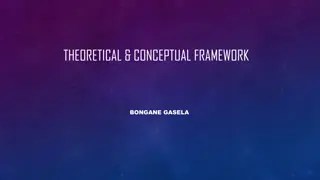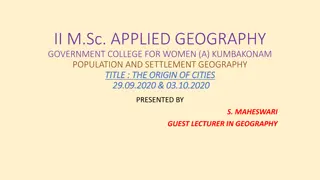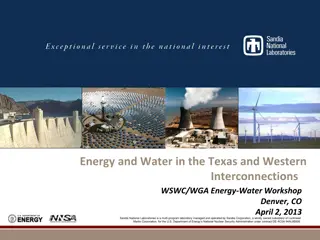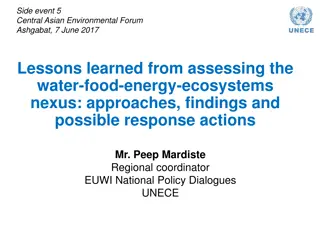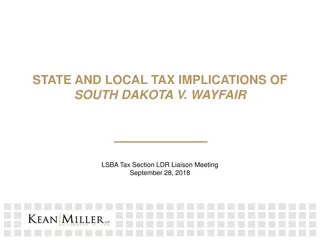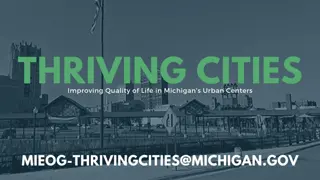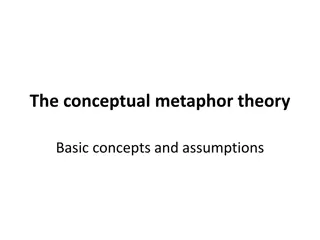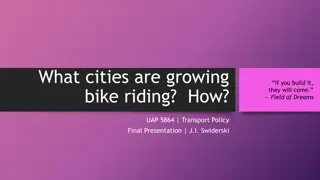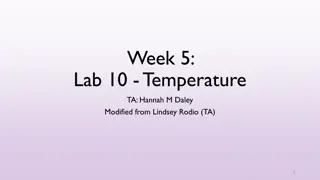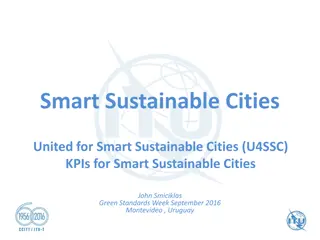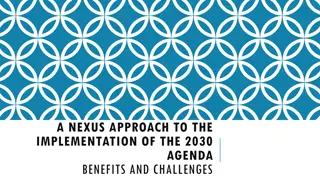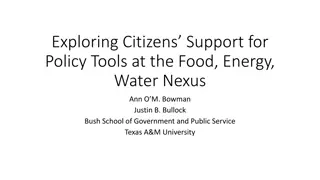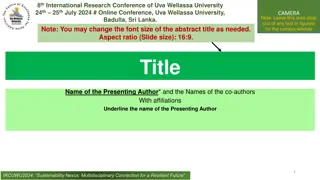Conceptual Framework for Effects of GBI on FWE Nexus in Cities
Edible urban greenspaces play a crucial role in the food-water-energy nexus in cities. This literature review explores the interconnected activities in the food system and the various nexus types related to water, energy, and food production. Additionally, the mapping approach for understanding the dynamics of edible greenspaces in Taipei provides valuable insights for sustainable urban planning and management.
Download Presentation

Please find below an Image/Link to download the presentation.
The content on the website is provided AS IS for your information and personal use only. It may not be sold, licensed, or shared on other websites without obtaining consent from the author.If you encounter any issues during the download, it is possible that the publisher has removed the file from their server.
You are allowed to download the files provided on this website for personal or commercial use, subject to the condition that they are used lawfully. All files are the property of their respective owners.
The content on the website is provided AS IS for your information and personal use only. It may not be sold, licensed, or shared on other websites without obtaining consent from the author.
E N D
Presentation Transcript
WP2 (presented in Sao Paulo in 09/2019) Fig 2: Fig 2: Conceptual framework for the effects of GBI on the FWE nexus in cities.
Edible Urban Greenspaces: Scope WP6 (presented in Sao Paulo in 09/2019) Agriculture lands Agriculture lands Parks Allotments Gardens Formal parks and greenspaces Greenspaces (including forests) Urban Agriculture Riverside Informal greenspaces Roadside Non-agriculture lands School grounds Other open spaces Institutional grounds Disused/vacant lands Scope of edible greenspaces in literature Rooftops Buildings Other vertical gardens
FWE of Edible Urban Greenspaces: Literature Review (WP6 (presented in Sao Paulo in 09/2019) Food system is defined as the chain of activities connecting food production, processing, distribution, consumption, and waste management, as well as the associated regulatory institutions and activities (Pothukuchi, & Kaufman, 2000). Nexus types Description Rainwater Grey water Tap water Waste water Irrigation to plants Water to food Hydropower Extracting water Pumping water Delivering water Water treatment Water to energy Energy to water Transporting materials (seeds, fertilizers, compost) from markets Food transport to markets Food delivery to consumers Building operation Logistical and storage process for food production Runoff retention Surface water drainage Regulation of micro-climate (cooling) and reduce energy consumption Bioenergy Transportation (food mile) Energy to food Food to water Food to energy
Mapping Approach for FEW Dynamics of the Edible GSs in Taipei (WP6 (presented in Sao Paulo in 09/2019) Conceptual framework based on expert interview, documentary review, and site observation.
